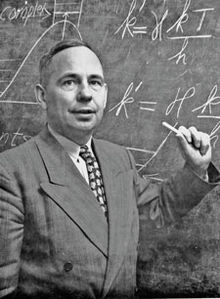The Eyring Equation which is also known as Eyring–Polanyi equation is an equation used in chemical kinetics to describe changes in the rate of a chemical reaction against temperature.
The equation was developed simultaneously by Henry Eyring, Meredith Gwyne Evans and Michael Polanyi, in 1935.

The Equation
The equation follows from the transition state theory. It is also known as the activated-complex theory.
On assuming constant enthalpy of activation and entropy of activation, the Eyring equation is similar to the empirical Arrhenius equation, despite the Arrhenius equation being empirical and the Eyring equation based on statistical mechanical justification.
The equation is of the form:
\(\large{k = \frac{ κ k_B T}{h} e^{-\frac{\Delta G^\ddagger{}}{RT}}}\)Where,
\(k\) – Reaction constant
\(\Delta G^\ddagger{}\) – Gibbs energy of activation
κ– Transmission coefficient
\(k_B\) – Boltzmann’s constant
\(h\) – Planck’s constant
\(T\) – Absolute temperature
\(R\) – Gas Constant
It can also be written as.
\(\large{k = \frac{ κ k_B T}{h} e^{-\frac{\Delta S^\ddagger{}}{R}} e^{-\frac{\Delta H^\ddagger{}}{RT}}}\)
Where,
\(\Delta S^\ddagger{}\) – Entropy of activation
\(\Delta H^\ddagger{}\) – Enthalpy of activation
FAQs
Transition state theory (TST) explains the reaction rates of elementary chemical reactions. The theory assumes a special type of chemical equilibrium between reactants and activated transition state complexes.
